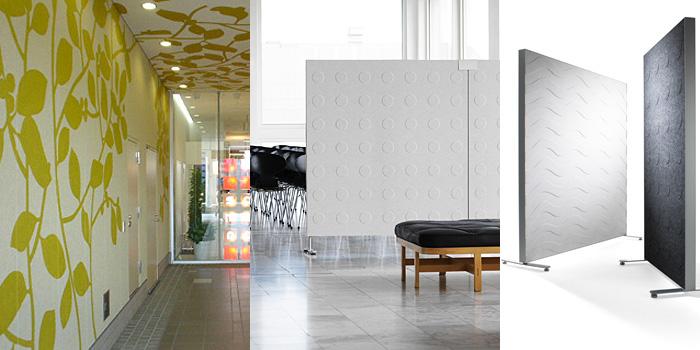
Other areas /
Google Ads
Nina Jobs: Impressions of depthMuch of Jobs’ work is characterized by the impression of depth and movement it creates on a flat surface. |
SUBSCRIBE SEND AS EMAIL |

|
|
|
Nina Jobs's designs, Green boulevard; Doremi Dots; Alumi Abstracta
|
1 |
|
When someone in the Jobs family talks about textiles, people in Sweden always listen. Nina Jobs, however, never had much to say about fabric when she was growing up, even though her family tree boasts several generations of textile artists. And with an education in graphic design and a master's degree in product design from École Nationale Supérieure des Arts Décoratifs in Paris, Swedish textiles were the furthest thing from Jobs' mind when she set up her studio in Stockholm.
"My work is not specifically about fabrics," Jobs said. "It's about two-dimensional design, three-dimensional structures and product design. I’m more aware of what’s going on in fashion and in furniture design than I am in the textile industry. I get ideas from traveling to overseas countries and hanging out in big cities." "I often work in different layers to create a 3-D feeling," Jobs explained, "and I often work with strong colors, sometimes overlapping them a little to create more depth. A pattern shouldn’t feel static, because if it does it will seem banal. But it doesn’t have to be complicated either. I like to keep my designs clean and simple. To create the feeling of "hand made", the patterns are never perfect, always incorporated with small mistakes!" Jobs’ textile work spread beyond Sweden’s borders when she created the esteemed ‘Jungle’ motif produced by David Design. Commissions from IKEA took her motifs to homes throughout the world, when patterns such as ‘Hedvig’ and ‘Kilan’ were printed on bed-linens, and motifs such as 'Jutta' and 'Petra' were printed on interior textiles. "The collaborations with IKEA gave me an opportunity to spread my designs world wide, which I did with care and awareness," Jobs said. Some of the products Jobs has designed have required textiles engineered especially for them. The award-winning ‘Urbana’ rain poncho, for example, which Jobs designed for Simplicitas, was created in collaboration with technologists based at the manufacturer. "It took a lot of research to find the right thread for weaving the textiles, but it was worth it." When Jobs designed the free-standing ‘DoReMi’ screen for Abstract, she worked with a polyester blend made especially to create the rounded reliefs on the surface. Jobs’ work is as popular with architects and interior designers as it is with retail consumers, and sometimes they use her motifs in unexpected ways. Her collaboration with Kitayama & Company and Cibone in Japan resulted in bold, graphic patterns that colored the walls and ceilings of the interior. The prints seemed to create a tunnel for people to walk through, which gave an interactive dimension to the design. Projects like this contribute to a growing movement to create interactive products, taking textile design in an exciting new direction. |
Other articles on Design / Nordic Design Now Scandinavian design: Beyond Blond Louise Campbell: If it works in paper… Driving fashion forward Design in Sports Mathias Bengtsson: Redefining boundaries Trine Andersen: Wallpaper, contemporary walls Johan Verde: Design to lift, angle, clean and store Maija Louekaris: Channeling a spirit Johan Carpner: To capture the untamable
|
800 827 9333 © Copyright Nordic Reach 2008